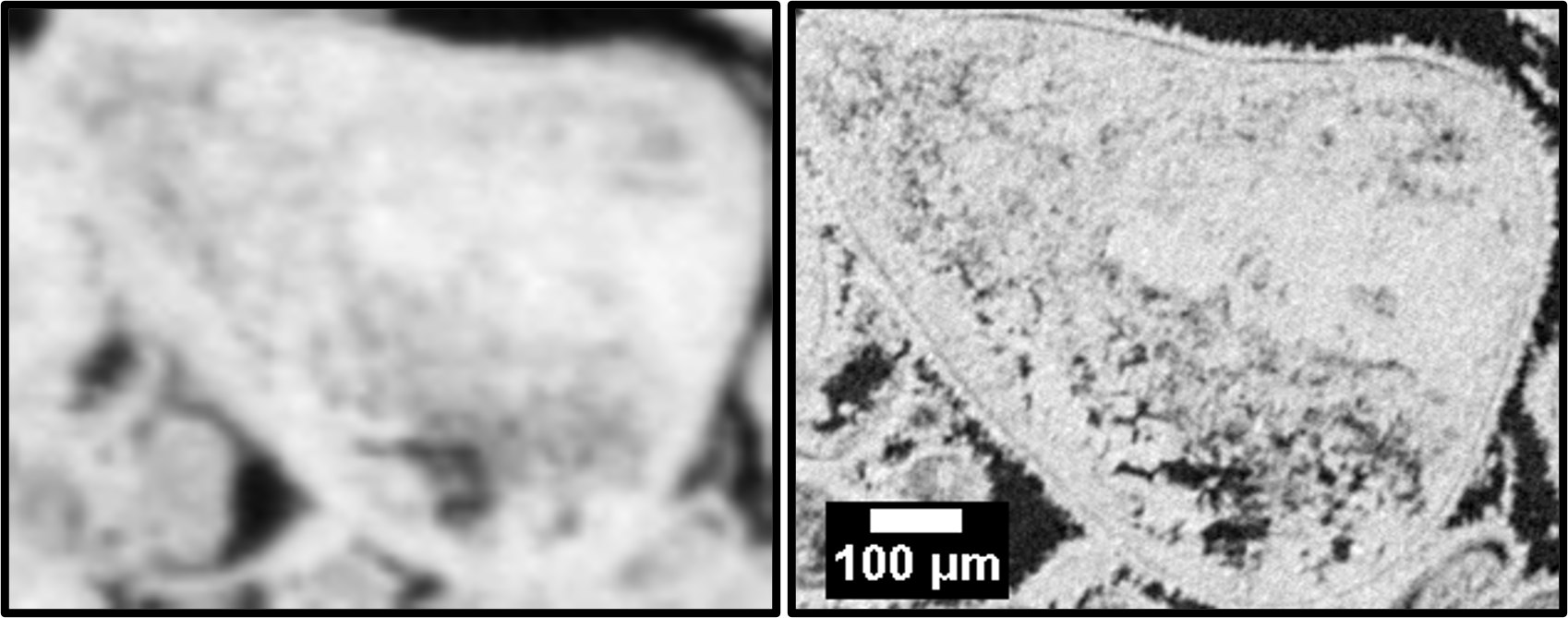
A Multi-Resolution Complex Carbonates Micro-CT Dataset (MRCCM) Overview: This dataset contains multi-resolution X-ray micro-computed tomography images of two complex carbonate rocks. The images included can be used to study partial volume effects, sub-resolution artifacts, segmentation methodology on digital rock analyses, and modeling. Furthermore, these images can be used for benchmarking deep learning frameworks for super-resolution, segmentation, or both (see related publication tab). Materials: The carbonates are Indiana Limestone (ILS) and Middle Eastern Carbonate (MEC) samples. Both rocks are monomineralic with over 95% calcite content and rare occurrence of other minerals such as quarts and micrite. Both rocks display a variety of microporous textures characterized by lower greyscale intensity levels (this can be seen in HR images). Mercury Intrusion Capillary Pressure (MICP) tests indicate a dual pore system in both carbonates. A detailed description can be found in the related journal publication. ILS MICP total porosity: 16.38% ILS MICP Macroporosity: 9.17% ILS MICP Microporosity 7.22% MEC MICP total porosity: 29.79% MEC MICP Macroporosity: 17.84% MEC MICP Microporosity 10.97% Image acquisition and processing: The 6 mm in diameter core plugs are imaged at a high spatial resolution (HR) of 2.68 micrometer/voxel and a low spatial resolution (LR) of 10.72 micrometer/voxel. The core plugs are imaged at the University of New South Wales using HeliScanTM micro-CT (Mark I). The segmentations were performed using Avizo Software using a combination of watershed and hysteresis algorithms. The segmented images containing three phases, namely: (1) macropores, (2) solid grains, (3) microporosity (sub-resolution porosity). Citation: To use this free data, we ask you to cite both (DOI) of this project and the related journal publication. File Organization: -Raw tomograms: We provide the raw tomograms of both rocks at high and low resolution. The raw files are in .nc format which can be opened using ImageJ, netCDF4 Python library, Matlab, Avizo, and many other software. The size of each (.nc) block is [2520 2520 40] voxels in X, Y, and Z directions and should be concatenated in sequence along the z-axis. The (,nc) variable name is set to 'tomo'. >Raw tomograms --High-resolution Indiana Limestone Tomogram (HR ILS Tomogram) - [101 Blocks] --High-resolution Middle Eastern Carbonate Tomogram (HR MEC Tomogram) - [119 Blocks] --Low-resolution Indiana Limestone Tomogram (LR ILS Tomogram) - [25 Blocks] --Low-resolution Middle Eastern Carbonate Tomogram (LR MEC Tomogram) - [31 Blocks] -Processed Volumes: Matching central LR & HR greyscale domains of each rock are provided as Matlab arrays (.mat). The HR domains are scaled four times the size of the LR domain. The Matlab arrays are saved in version ‘-v7.3’ and can be opened in Matlab and Python using h5py Python Library. The HR volumes are divided into 4 files and need to be concatenated along the z-axis to obtain the same LR image. The segmented HR images using Avizo are also made available. The testing volume used in our publication is the domain enclosed by the first 256 voxels in LR images and 1024 voxels in HR images in X, Y, and Z directions. > Processed Volumes -- HR Volumes (.mat) files (concatenate along z-axis) -- LR Volumes (.mat) files -- HR Segmented Volumes (.mat) files
Naif Alqahtani (University of New South Wales)
May 19, 2021
ODC-BY 1.0
10.17612/3t36-q704
The downloadable archive contains all project data; the size of the archive file for this project is 137.42 GB.
Download